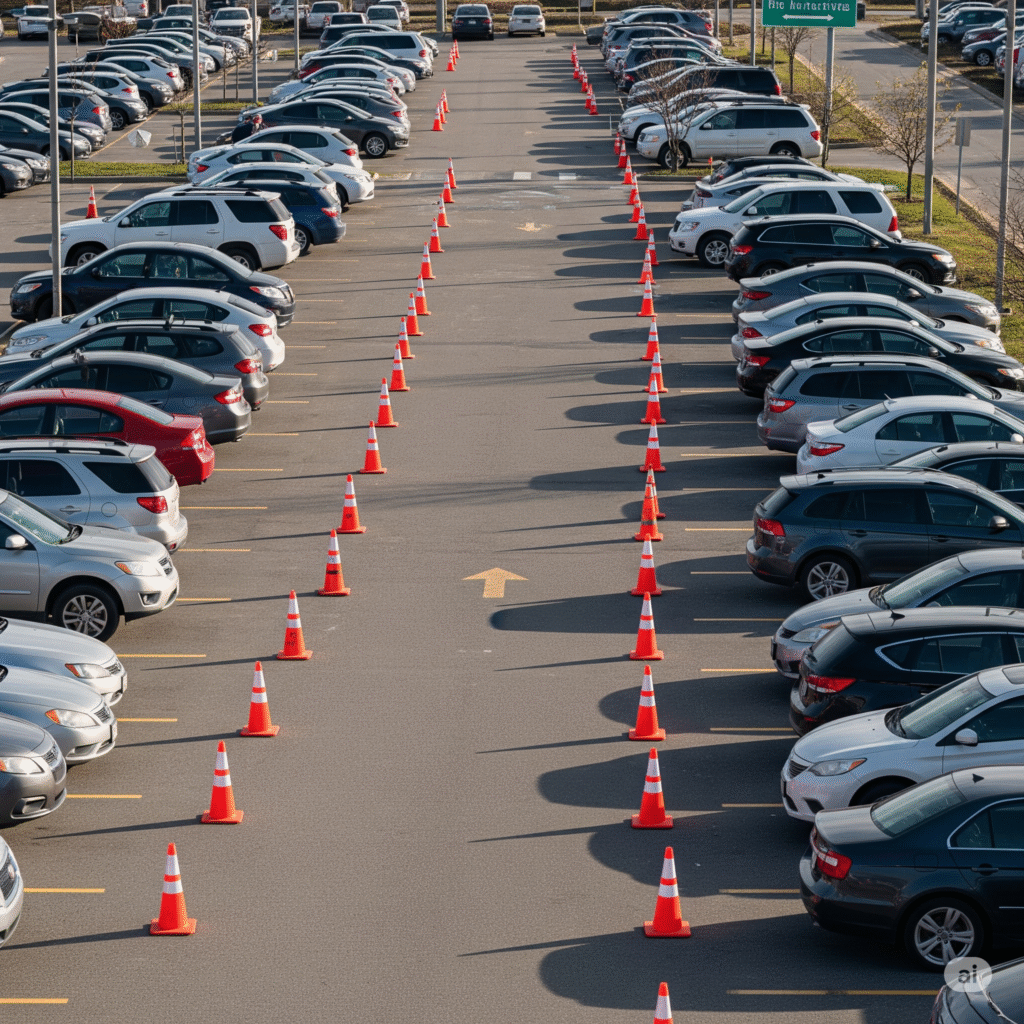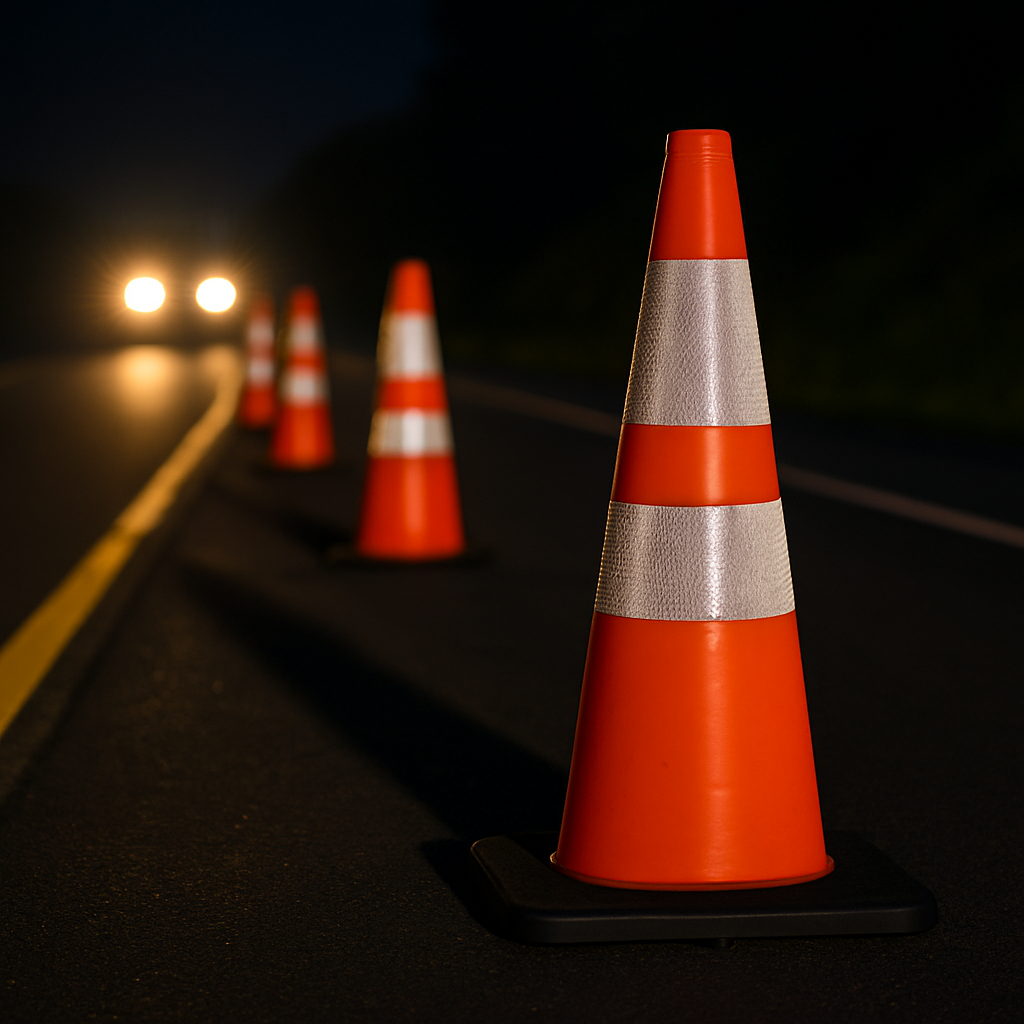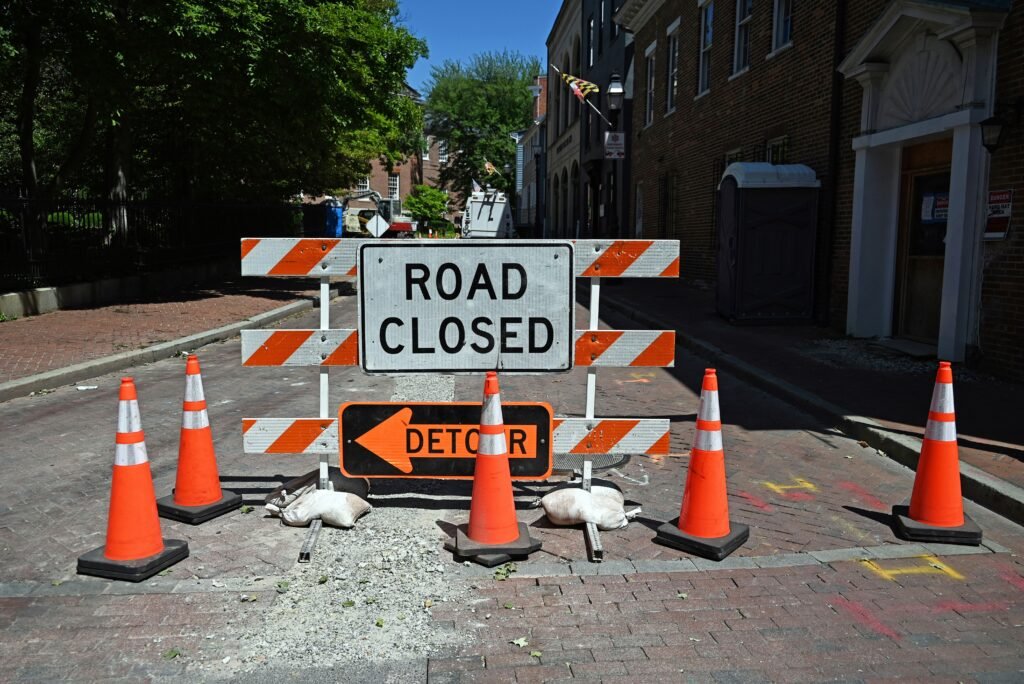Traffic cones are simple but powerful tools for controlling flow, guiding vehicles, and protecting workers in active job sites. Whether it’s a construction zone, warehouse repair, utility work, or industrial yard maintenance, the proper use of cones ensures order, safety, and efficiency.
However, many businesses underestimate the strategic role these cones play. Incorrect placement, poor visibility, or lack of structure in deployment can lead to confusion, accidents, and liability issues. This article outlines the best practices for deploying traffic cones effectively in work zones, ensuring safety for workers and smooth operations for businesses.
Understanding the Purpose of Cone Deployment
The first step is to understand what cones are meant to achieve in a work zone. Traffic cones are used to alert, guide, and separate. They communicate visual boundaries for vehicles and pedestrians, direct traffic patterns temporarily, and physically block access to dangerous or restricted areas.
In B2B environments like logistics yards, construction projects, parking facilities, or roadside maintenance, these roles are critical. Workers are often exposed to moving equipment and passing traffic. Cones offer a fast, visible method to establish clear zones and keep work flowing without compromising safety.

Choose the Right Type and Size of Cone
All cones are not the same. Their visibility and durability vary based on size, material, and reflective features. For industrial or high-speed areas, cones that are at least 28 inches tall are the standard. Smaller cones may be useful for pedestrian zones or indoor work but aren’t suitable for exterior traffic or equipment-heavy areas.
In outdoor work zones, especially those involving vehicles, cones should have reflective collars for nighttime visibility. Heavy-weight bases help prevent tipping due to wind or passing vehicles. Durable PVC or rubber construction ensures they hold up against tough conditions.
For projects in public roadways or where DOT regulations apply, make sure the cones meet local traffic control standards.
Map Out the Work Zone First
Before placing any cones, it’s important to assess the work area. This means identifying entry and exit points, vehicle routes, equipment movement paths, pedestrian access areas, and any potential hazards. The goal is to create a clear visual boundary that separates active work from ongoing operations or through traffic.
For example, if a section of the warehouse is undergoing maintenance, cones should be placed in a perimeter wide enough to account for both the tools and workers’ movement space. Similarly, for a roadside project, cones should begin far enough in advance to give drivers time to slow down and adjust course.
Mapping the zone helps determine how many cones are needed and where they’ll be most effective. This planning step prevents overuse or gaps in protection that compromise safety.

Follow Consistent Spacing Rules
Proper spacing of cones is what creates a visual guide for drivers and operators. In most work zone layouts, cones should be placed at consistent intervals to form a clear, unbroken path. If spacing is too wide, drivers may miss the message or cut through unintended gaps. If it’s too tight, cones may appear cluttered and lose their guiding effect.
While spacing can depend on speed limits and specific environments, a general rule for slower zones (under 40 km/h) is to place cones 10 to 15 feet apart. For high-speed areas or long stretches, extend the spacing to 20 or 25 feet, but only if visibility remains clear.
Inside facilities or pedestrian-heavy zones, closer spacing creates more emphasis and improves caution.
Ensure High Visibility at All Times
Visibility is one of the most important factors in effective cone deployment. Cones are meant to be seen clearly from a distance and from all directions. This is especially important during night work, foggy conditions, or in areas with poor lighting.
Cones used in outdoor or low-light conditions should have reflective bands, ideally two collars on each cone. Place them in illuminated zones where possible or add portable lighting to ensure the boundaries are visible during late or early hours.
Dirty or faded cones should be replaced or cleaned regularly. A cone that blends into the background or is no longer visible at a distance fails its core safety function.

Anchor Cones if Needed
Wind, fast-moving vehicles, or uneven terrain can knock over cones, especially lightweight models. In outdoor or high-risk areas, always use cones with weighted bases or attach anchoring rings or sandbags to ensure they stay upright.
A tipped cone not only fails to guide traffic but can become an obstacle itself. Even indoors, if there’s frequent forklift traffic, anchored cones can prevent accidental displacement.
Assign a Supervisor to Monitor and Adjust
In dynamic work zones, conditions change throughout the day. Equipment may move, work may progress down a lane, or weather could alter visibility. It’s essential to have a site supervisor or safety officer periodically check and adjust cone placement.
Routine checks ensure cones haven’t shifted, been run over, or moved by wind or vehicles. It also allows for modifying the layout if the job site expands or transitions to a new stage.
Having one person responsible for cone layout prevents confusion and ensures consistent execution. Without oversight, even a carefully planned cone setup can become ineffective within a few hours.
Combine Cones with Signage Where Necessary
While cones are visually effective, combining them with signs improves clarity. Signs can indicate why the area is closed, what action drivers should take, or where alternate routes are located.
In a warehouse, a cone may mark a blocked aisle, but a sign stating “Forklift Maintenance in Progress – Use Left Aisle” removes uncertainty. In a parking lot, a cone with a sign reading “Reserved for Delivery Truck” avoids confusion for staff or visitors.
The goal is to use cones not just as visual barriers but as part of a broader communication strategy.

Keep an Inventory of Quality Cones
Maintaining a clean, durable inventory of traffic cones ensures quick deployment when needed. Too many businesses scramble during emergencies only to find broken, faded, or missing cones.
Keep cones stored in a central, accessible location. Stack them properly to avoid warping and keep reflective surfaces protected from sun damage when not in use. For larger operations, it’s smart to conduct a monthly cone inventory to replace damaged units and maintain deployment readiness.
Final Thoughts
Traffic cones are far more than plastic markers. When used correctly, they form the front line of defense in any work zone, guiding people and vehicles away from danger and toward efficiency. But their success depends on proper planning, spacing, visibility, and supervision.
For business owners and site managers, investing time in smart cone deployment not only protects employees and assets but also keeps projects on schedule and compliant with safety standards. Taking these best practices seriously ensures your work zones stay safe, controlled, and productive.
Looking for a custom traffic cones manufacturer or supplier? Struggling to find the right factory to bring your vision to life? We’ve got you covered! At our place, we craft top-quality traffic cones with precision and care. Big or small, your needs are our mission. Let’s launch your cones project and take your product line to the next level! Click here to contact
